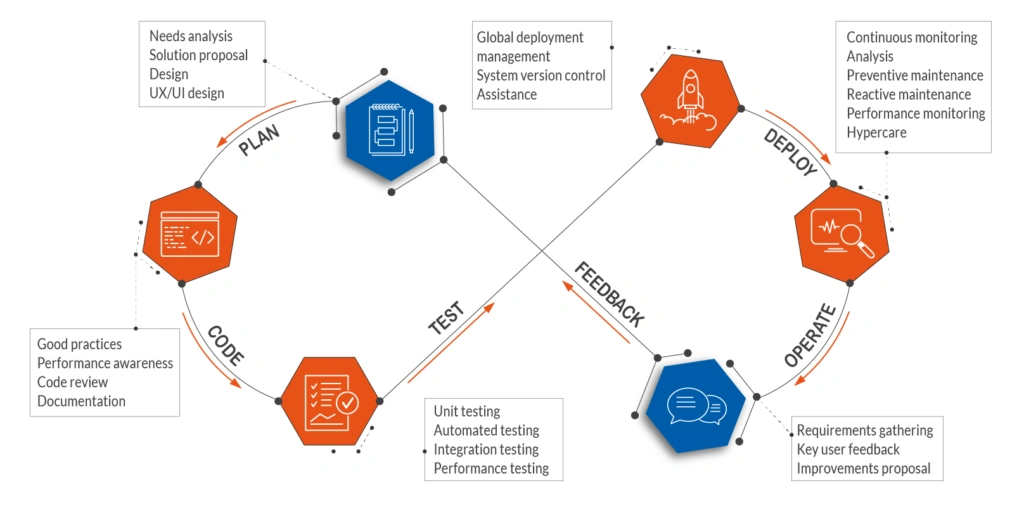What is DevOps, and how does it work?
DevOps is a software development methodology that brings people, processes, and technology together to provide continuous value to the organization through frictionless communication, collaboration, and automation. Under the DevOps model, software development is delivered as an ongoing service to ensure the smooth flow of the SDLC (Software Development Life Cycle) and robustness in daily operations.
Traditionally, operations and development teams operated as two separate entities, each working on different application components before merging the code just before the go-live. As you can imagine (or tell from your own experience), this siloed approach leaves very little room for testing to detect bugs and errors to prevent application outages in time.
In a DevOps environment, releasing new functionalities is fast-paced yet controlled through predefined steps and processes that ensure errors are spotted quickly and before they wreak havoc on the shop floor. Since DevOps is about moving the project from requirements to a viable solution “on the go,” its success depends on maintaining a frictionless feedback loop between DevOps, stakeholders, and end-users. Applications are released through the following steps: plan, code, test, deploy, operate, feedback – then, rinse and repeat.
Below is a visual representation of the typical MES DevOps process.


